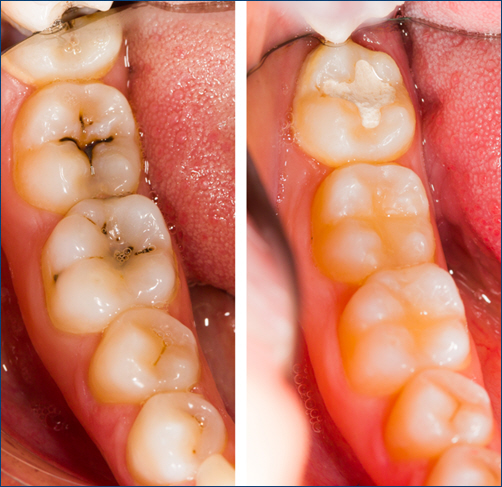Dental fillings are essential for restoring teeth damaged by decay, injury, or other issues. With various types of dental fillings available, each offers unique benefits and considerations. Understanding the options can help you and your dentist choose the best filling material for your needs. Here’s a look at the most common types of dental fillings and their advantages.
 Composite Resins
Composite Resins
-
- Overview: Composite resins, often referred to as tooth-colored fillings, are made from a blend of plastic and fine glass particles. They are designed to match the natural color of your teeth.
- Benefits: Composite resins provide a seamless blend with your existing teeth, making them ideal for fillings in visible areas. They also bond directly to the tooth, which can help reinforce its strength. Additionally, composite fillings are less likely to expand or contract with temperature changes compared to some other materials.
Amalgam Fillings
-
- Overview: Amalgam fillings are a durable and cost-effective option made from a mixture of metals, including silver, mercury, tin, and copper.
- Benefits: Known for their longevity and strength, amalgam fillings are particularly effective for restoring back teeth that endure heavy chewing pressure. They are highly resistant to wear and are less prone to breaking down over time. Despite their metallic appearance, their durability makes them a practical choice for many patients.
Ceramic Fillings
-
- Overview: Ceramic fillings, also known as porcelain fillings, are made from dental porcelain and are highly durable.
- Benefits: Ceramic fillings are highly resistant to staining and wear. They offer a natural look that blends well with your teeth, making them a popular choice for visible areas. They also provide excellent biocompatibility, which means they are less likely to cause adverse reactions in the mouth.
Glass Ionomer Fillings
-
- Overview: Glass ionomer fillings are made from a blend of glass and acrylic. They release fluoride, which can help protect against further decay.
- Benefits: These fillings are useful for areas that are not subject to heavy chewing pressure. They bond chemically to the tooth structure and release fluoride, which can aid in the prevention of additional cavities. Glass ionomer fillings are often used in areas where esthetics are less critical or in pediatric dentistry.
Resin Ionomer Fillings
-
- Overview: Resin ionomer fillings are similar to glass ionomer fillings but are made with added resins for improved esthetics and strength.
- Benefits: They are used in areas that require a combination of fluoride release and better esthetics than traditional glass ionomer fillings. They are especially useful for filling small cavities in areas where tooth appearance is a concern.
Choosing the right dental filling depends on various factors, including the location of the filling, your budget, and your esthetic preferences. Composite resins and ceramics are excellent choices for visible areas due to their natural appearance, while amalgam fillings are renowned for their durability. Glass and resin ionomer fillings offer additional benefits such as fluoride release and are suitable for specific applications. Consulting with your dentist will help you make an informed decision based on your individual needs and preferences, ensuring a functional and aesthetically pleasing result.

